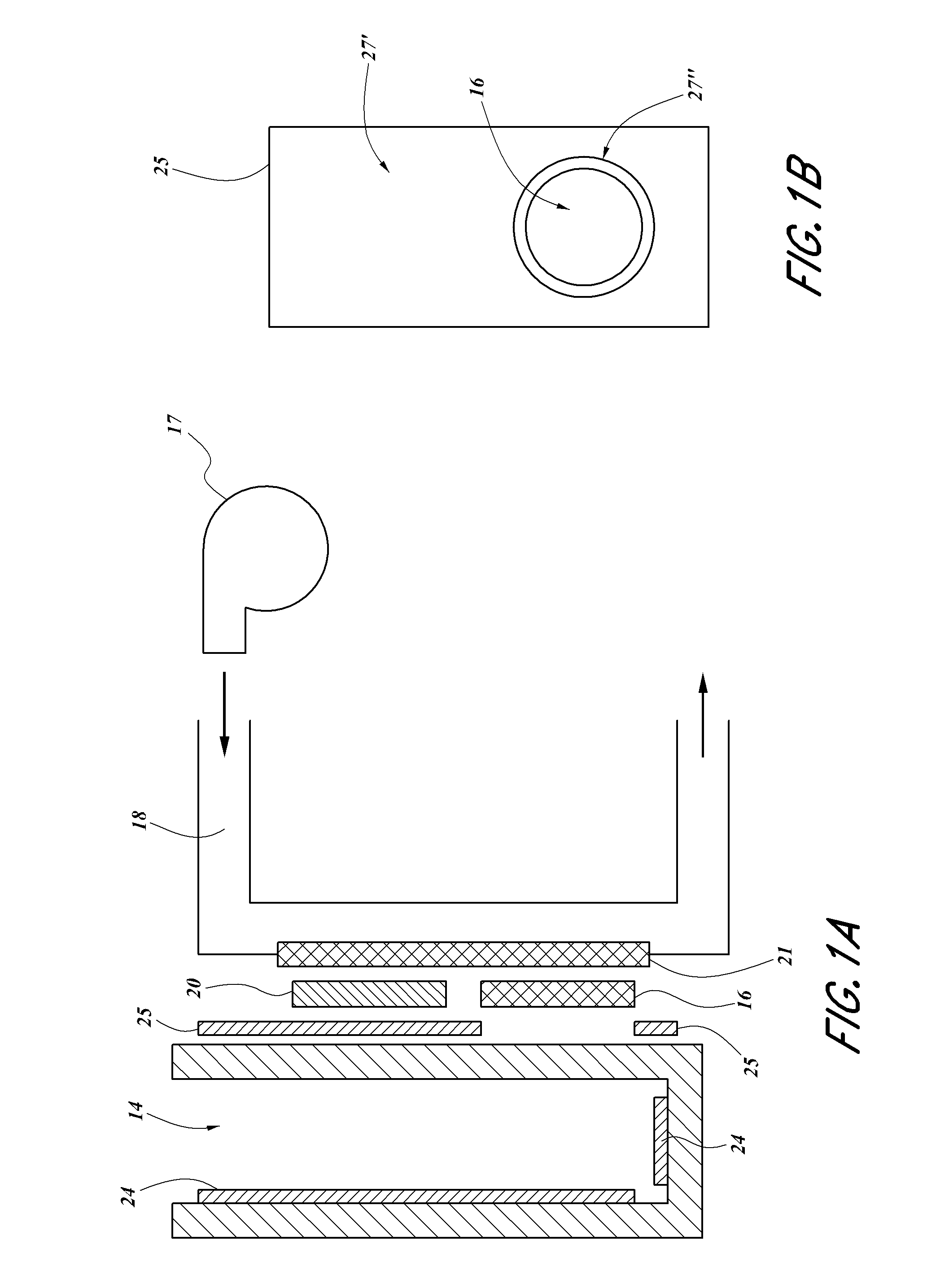Systems and methods for cooling inductive charging assemblies
a charging assembly and inductive charging technology, applied in the field of cooling devices, can solve the problems of reducing fuel economy, reducing performance and/or reducing fuel economy, and affecting the use of peds,
- Summary
- Abstract
- Description
- Claims
- Application Information
AI Technical Summary
Benefits of technology
Problems solved by technology
Method used
Image
Examples
Embodiment Construction
[0056]With reference to FIG. 1, a system 10 for cooling an inductive charger is illustrated. In some embodiments, the system 10 includes a thermal conditioning assembly 12 in thermal communication with an inductive charging assembly 13. In various implementations, the system 10 is located in a vehicle, such as a car, truck, tractor, airplane, ship, train, motorcycle, wheelchair, stroller, wagon, or otherwise. In some embodiments, the system is incorporated, at least partially, into one or more other components of the vehicle (e.g., console, dashboard, other interior portion, etc.). Some variants of the system 10 are included in a generally stationary object, such as a chair, bed, desk, table, or otherwise.
[0057]In certain implementations, the thermal conditioning assembly 12 includes one more of the following: a fluid transfer device 17 (such as, e.g., a pump, blower, or fan), ducting 18 (e.g., a fluid line, coupling, piping, tubing, etc.) thermal conditioning module 20 (e.g., therm...
PUM
 Login to View More
Login to View More Abstract
Description
Claims
Application Information
 Login to View More
Login to View More - R&D
- Intellectual Property
- Life Sciences
- Materials
- Tech Scout
- Unparalleled Data Quality
- Higher Quality Content
- 60% Fewer Hallucinations
Browse by: Latest US Patents, China's latest patents, Technical Efficacy Thesaurus, Application Domain, Technology Topic, Popular Technical Reports.
© 2025 PatSnap. All rights reserved.Legal|Privacy policy|Modern Slavery Act Transparency Statement|Sitemap|About US| Contact US: help@patsnap.com



